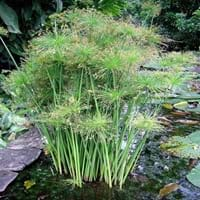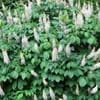Life Span
Perennial
Perennial
Origin
Southeastern United States
World/Pandemic
Types
Not available
Not available
Habitat
Bluffs, Coastal Regions, Stream side, Woods
Grassland, Wet lands
USDA Hardiness Zone
5-9
7-11
Sunset Zone
Not Available
H1, H2, 16, 17, 23, 24
Habit
Spreading
Spreading
Flower Color
White, Pink
Green, Brown
Flower Color Modifier
Bicolor
Not Available
Fruit Color
Brown
Not Available
Leaf Color in Spring
Green
Green
Leaf Color in Summer
Dark Green
Green
Leaf Color in Fall
Lemon yellow, Yellow green
Green
Leaf Color in Winter
Not Available
Not Available
Leaf Shape
Palmate
Grass like
Plant Season
Spring, Summer, Fall
Spring, Summer, Fall
Sunlight
Full Sun, Partial Sun, Partial shade
Full Sun, Partial Sun, Partial shade
Type of Soil
Clay, Loam, Sand
Clay, Loam, Sand
The pH of Soil
Acidic, Neutral, Alkaline
Acidic, Neutral, Alkaline
Soil Drainage
Average
Poorly Drained
Bloom Time
Summer, Late Summer
Early Summer, Summer, Late Summer, Early Fall
Tolerances
Salt, Wind
Drought
Where to Plant?
Ground, Pot
Container, Ground, Pot
How to Plant?
Cuttings, Seedlings
Bulbs, Divison, Rhizome division, Tubers
Plant Maintenance
Low
Medium
Watering Requirements
Keep the Soil well drained, Requires regular watering
Do not let dry out between waterings, Keep ground moist, Keep the Soil well drained
In Summer
Lots of watering
Lots of watering
In Spring
Moderate
Moderate
In Winter
Average Water
Average Water
Soil pH
Acidic, Neutral, Alkaline
Acidic, Neutral, Alkaline
Soil Type
Clay, Loam, Sand
Clay, Loam, Sand
Soil Drainage Capacity
Average
Poorly Drained
Sun Exposure
Full Sun, Partial Sun, Partial shade
Full Sun, Partial Sun, Partial shade
Pruning
Remove damaged leaves, Remove dead branches, Remove dead flowers, Remove dead leaves
No pruning needed
Fertilizers
14-14-14 Fertilizer, Apply N-P-K, slow-release fertilizers
can go long without fertilizers
Pests and Diseases
Edema, Powdery mildew, Verticillium Wilt
Red blotch
Plant Tolerance
Salt, Wind
Drought
Flower Petal Number
Single
Single
Foliage Texture
Coarse
Fine
Foliage Sheen
Matte
Glossy
Invasive
Sometimes
Sometimes
Attracts
Butterflies, Hummingbirds
Birds, Butterflies, Flying insects
Allergy
Pollen
Itchiness, Skin rash
Aesthetic Uses
Cottage Garden, Showy Purposes
Beautification, Bog Garden, Showy Purposes, Used for decorating walls, fences, gates, hedges, etc.
Beauty Benefits
Not Available
Not Available
Environmental Uses
Air purification, Wildlife
Air purification
Medicinal Uses
Antirheumatic, Colic, constipation, Piles
No Medicinal Use
Part of Plant Used
Seeds
Not Available
Other Uses
Used for making soaps
Container, Decoration Purposes, Florist trade and landscaping, Used as Ornamental plant
Used As Indoor Plant
No
Yes
Used As Outdoor Plant
Yes
Yes
Garden Design
Feature Plant, Foundation, Screening, Wind Break
Bog Garden, Container, Tropical, Water Gardens
Botanical Name
AESCULUS parviflora
Cyperus papyrus
Common Name
bottlebrush buckeye, dwarf horse chestnut
Dwarf papyrus, Miniature papyrus
In Hindi
Bottlebrush Buckeye
dwarf papyrus
In German
Buckeye Putzer
Zwerg Papyrus
In French
Bottlebrush Buckeye
papyrus nain
In Spanish
bottlebrush Buckeye
papiro enano
In Greek
bottlebrush Buckeye
νάνος πάπυρο
In Portuguese
Bottlebrush Buckeye
papiro anão
In Polish
Bottlebrush Buckeye
krasnolud papirus
In Latin
bottlebrush Buckeye
P. papyrus
Phylum
Magnoliophyta
Tracheophyta
Class
Magnoliopsida
Magnoliopsida
Family
Hippocastanaceae
Cyperaceae
Clade
Angiosperms, Eudicots, Rosids
Angiosperms, Commelinids, Monocots
Tribe
Not Available
Not Available
Subfamily
Hippocastanoideae
Not Available
Season and Care of Bottlebrush Buckeye and Dwarf Papyrus
Season and care of Bottlebrush Buckeye and Dwarf Papyrus is important to know. While considering everything about Bottlebrush Buckeye and Dwarf Papyrus Care, growing season is an essential factor. Bottlebrush Buckeye season is Spring, Summer and Fall and Dwarf Papyrus season is Spring, Summer and Fall. The type of soil for Bottlebrush Buckeye is Clay, Loam, Sand and for Dwarf Papyrus is Clay, Loam, Sand while the PH of soil for Bottlebrush Buckeye is Acidic, Neutral, Alkaline and for Dwarf Papyrus is Acidic, Neutral, Alkaline.
Bottlebrush Buckeye and Dwarf Papyrus Physical Information
Bottlebrush Buckeye and Dwarf Papyrus physical information is very important for comparison. Bottlebrush Buckeye height is 180.00 cm and width 180.00 cm whereas Dwarf Papyrus height is 20.30 cm and width 25.40 cm. The color specification of Bottlebrush Buckeye and Dwarf Papyrus are as follows:
Bottlebrush Buckeye flower color: White and Pink
Bottlebrush Buckeye leaf color: Green
Dwarf Papyrus flower color: Green and Brown
- Dwarf Papyrus leaf color: Green
Care of Bottlebrush Buckeye and Dwarf Papyrus
Care of Bottlebrush Buckeye and Dwarf Papyrus include pruning, fertilizers, watering etc. Bottlebrush Buckeye pruning is done Remove damaged leaves, Remove dead branches, Remove dead flowers and Remove dead leaves and Dwarf Papyrus pruning is done No pruning needed. In summer Bottlebrush Buckeye needs Lots of watering and in winter, it needs Average Water. Whereas, in summer Dwarf Papyrus needs Lots of watering and in winter, it needs Average Water.





